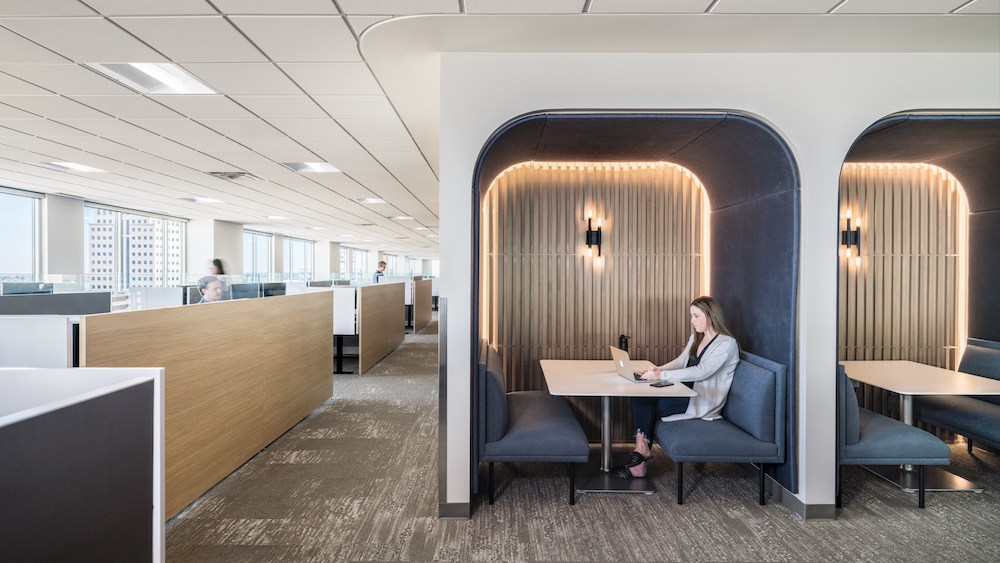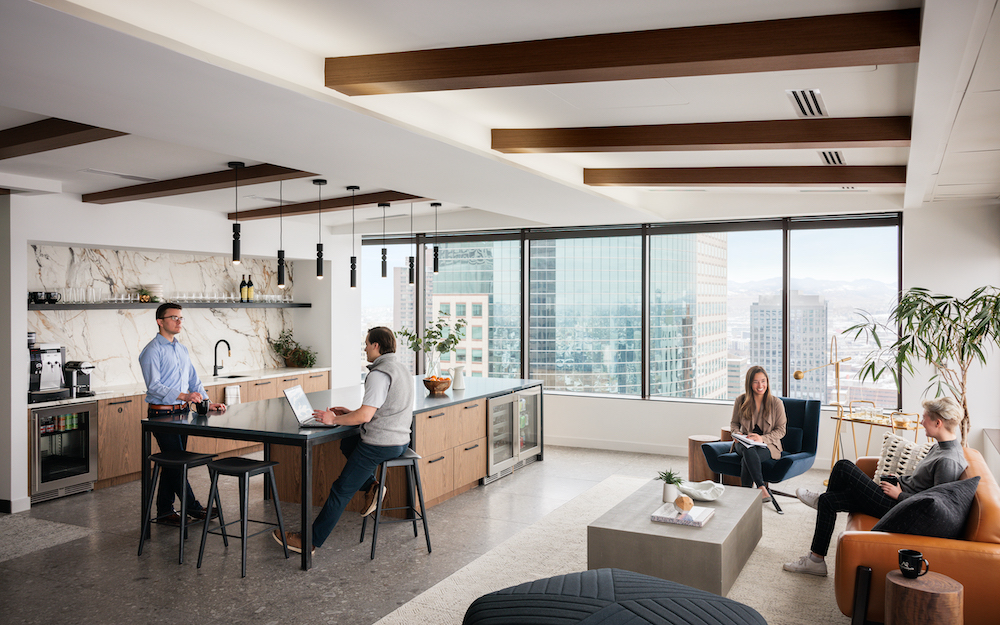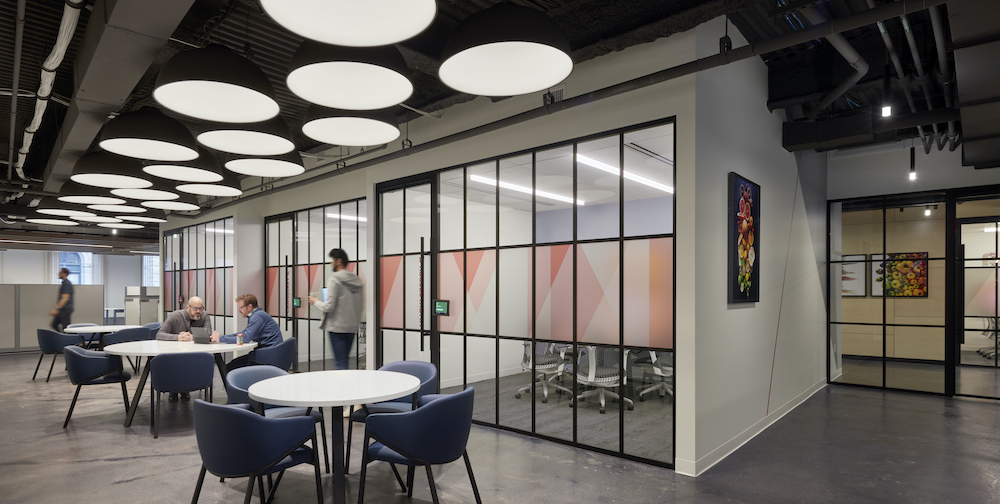Stantec’s Chris Miller explores four new roles that workplace designers now play.
Picture this: it’s 2019. The market is hot, skylines are dotted with cranes, and office design continues to shift as the 6×6 workstation takes hold. Metrics for design of the workplace are well established and for most clients the factors involved in designing new spaces comes down to flexibility, change management for individuals being moved out of the office, and whether to opt for an amenity element to keep staff engaged. Workplace strategists have guided clients efficiently through the process and argued for these metrics while designer’s work to customize the resulting space to the client brand.
As we get closer to a “post-pandemic world,” the purpose of the office, and thus its design, has seen many shifts. At the start of the pandemic, the office operated as a collaborative and cultural hub with the workforce operating almost entirely from home. The next phase introduced the hybrid model which soon led to the realization that the workplace is not a one hybrid fits all. Today, workplace design has become fragmented from a single set of rules and metrics into a myriad of approaches.
To determine the right approach for a client, the designer must have the expertise to be able to ask deeper questions and know how to translate this information into a solution. From philosopher to real estate advisor, logistics specialist to business psychologist, the role that designers now play is more in-depth than ever before.

The Philosopher
The workplace designer as the Philosopher understands the purpose of an office space. Some clients see the need for staff to be back in office — to cultivate productivity, connectivity, and culture — or want to create a space that generates new innovations and ideas. The designer must now play the role of Philosopher to help their clients identify purpose and translate this into a space.
For clients who opt for individuals back in office, designing space in a pre-pandemic way and simply mandating a return will lead to a disenfranchised workforce. Finding a solution in design can include adding amenities, targeting properties with inherent amenity access, or creating different workspace settings that can compete with the comforts of home.
The Real Estate Advisor
Prior to the pandemic, workplace designers helped clients identify how much space they would need through initial programming and metrics. The workplace designer as the Real Estate Advisor must now identify the sweet spot between an office with purpose while also reducing the real estate footprint. This role includes looking at buildings with clients to ensure amenity goals are met for staff. The flight to quality is driven by buildings that ease the load of the tenant by providing amenity space that helps them to operate more effectively including, accessible outdoor, retail, hospitality, and fitness spaces, and access to conference and coworking areas.

The Logistics Specialist
The daily rhythm of work varies by industry and organization. How information is shared, how ideas are generated, and how staff interact give each client a unique fingerprint. The designer as a Logistics Specialist must now understand how to design an office that incorporates workspaces for teams, departments, and individual work. As we head into a “post pandemic” world, we are seeing that there is no one approach to an office or ‘work from home’ environment. The Logistics Specialist has the responsibility to help guide a client to a solution that is best suited for their business and employees.
For example, a technology client may be able to justify a primarily remote working environment due to their nature of work and often global teams. For industries that require an environment that is partially local and partially remote, conference or meeting rooms must be designed to ensure everyone feels present and engaged. Alternatively, a creative solutions business – architecture, engineering, industrial engineering, creative arts, animation, etc. – may find that the most innovative and creative ideas come from direct interaction and collaboration of staff. In this case, the designer as a Logistics Specialist must create unique space solutions that encourages staff to be in office, whereas pre-pandemic solutions were generally a one size fits all.

The Business Psychologist
In addition to operational flow, the designer must also help clients understand their workforce by helping to develop personas that categorize the behaviors and tendencies of the workforce. In this case, the designer works as a Business Psychologist.
These personas guide decision making on the size and contents of a new office space. Understanding how many employees will be enticed to come into the office confirms a seat count. Identifying work environment preferences – furniture and technology needs – defines the type of work setting. Depending on the number of “on the fence” personas about the return to office, a client may decide incentivization is needed or selection of a site is more likely to encourage employees to come into the office.
There’s no longer a one size fits all workspace
In a world where employees are looking for employers to be genuine and aligned to their values, the creation of workspaces require more from the designer to find solutions for their clients. The designer’s role – philosopher, real estate advisor, logistics specialist, business psychologist, or a combination – requires a dynamic client partnership to create a bespoke office environment that engages and inspires their team.


